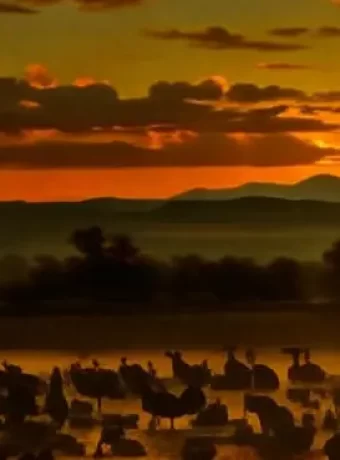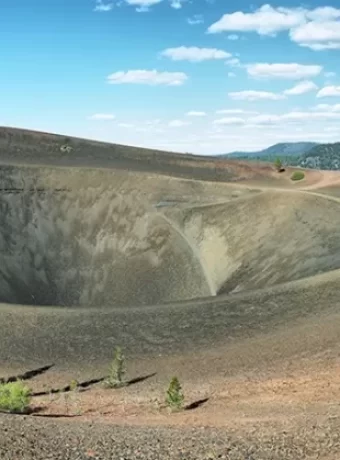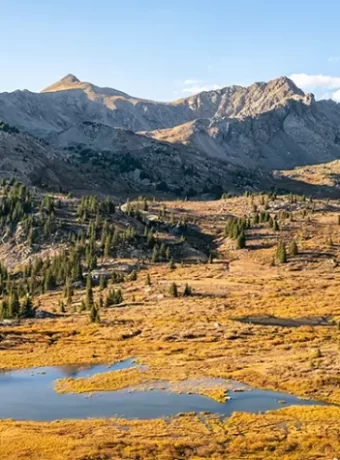Embarking on a DIY fly fishing trip down the Middle Fork of the Salmon River in Idaho? You’re not just stepping into any river; you’re about to wade through one of nature’s most splendid arenas. The allure of casting your fly line into its “gin-clear” waters, as they dance with westslope cutthroat trout and bull trout, is unmatched. This journey isn’t merely about fly fishing; it’s a deep dive into Mother Nature’s lap where every cast brings you closer to understanding her intricate beauty.
But let’s get real – preparing for this adventure requires more than just enthusiasm. With stats boasting an average ROI (Return On Indulgence) that skyrockets beyond expectations due to pristine water quality and abundant fish populations, success hinges on knowing what flies sing the siren songs for those elusive rainbow trout or mastering how your line dances across crystal clear currents. Mind blowing topography along the river gradient carved path on a wilderness landscape.
Table Of Contents:
- The Ultimate Guide to DIY Fly Fishing on the Middle Fork of the Salmon River
- Selecting the Perfect Flies for Middle Fork Salmon River
- Navigating Licenses and Regulations for a Hassle-Free Fishing Experience
- Maximizing Your Catch: Tips and Techniques for Middle Fork Salmon River
- Ensuring a Sustainable Adventure in Idaho’s Wilderness Areas
- FAQs in Relation to DIY Fly Fishing Middle Fork Salmon River Idaho
- Conclusion of Fly Fishing Middle Fork Salmon River
- Middle Fork Salmon River to Alaska, Canada, Or Fly Fish Iceland
The Ultimate Guide to DIY Fly Fishing on the Middle Fork of the Salmon River
Preparing for Your Adventure, Essential Gear and Tackle
You’re about to embark on the fly fishing adventure of a lifetime on the Middle Fork of the Salmon River. But before you hit the water, you’ve got to make sure you’re prepared with the right wilderness excursion gear and fly fishing gear.
First things first, let’s talk about your essential gear. You’ll need a quality fly rod and reel, waders, wading boots, and polarized sunglasses. Don’t forget a good hat to protect you from the sun and a reliable pair of pliers for removing hooks.
When it comes to tackle, you’ll want to stock up on leaders, tippet, and a variety of flies. The Middle Fork is known for its incredible dry fly fishing, so make sure you’ve got plenty of those in your box. But we’ll dive into the specifics of fly selection in just a bit.
Once we hit the water, we travel on river time — letting the river, wildlife-viewing possibilities, and our general mood set the daily schedule. This allows us to take advantage of any opportunities that may arise. Leave your watch behind and go with the flow. We float about five or six hours each day, taking time out for lunch, hiking, swimming, checking out hot springs, or visiting historic sites. At camp, there is ample time to hike side canyons, take pictures, read, write, or simply admire the landscape. Anglers from all corners of the globe rave about Middle Fork, not just for its crystal-clear waters but also for the teeming cutthroat trout that make it a premier spot for catch-and-release fly-fishing. Single barbless hooks are required and no bait is allowed. Please pack your rod in a sturdy container and obtain an Idaho fishing license before the trip.

Middle Fork of Salmon River Sun pro hoodie is the prefect fly fishing apparel Graphic Hoodie is a UPF-50 sun protection, with a sewn in face mask. Middle Fork Salmon River Graphic Hoodie.
Selecting the Perfect Flies for Middle Fork Salmon River
Top Dry Flies for Success
On Idaho’s Middle Fork we fish almost exclusively for native cutthroat trout. The Middle Fork is famous for dry fly fishing, which is 90% of the experience we offer. Sometimes on our Middle Fork Salmon River fly fishing trips we watch them bullet through the “gin clear” water from what seems like leagues below to aggressively strike a surface fly.

On the Middle Fork Salmon River I like a Purple Glitter Chubby. Glitter down with an orange straggle tag, body black straggle ice and golden olive gel core by Semperfli fly tying materials. Silicone legs and chartreuse poly wing. Size 4 thru 14’s.
Other times, particularly with the largest trout in the river, we can only see the strike for an instant while we drift large buoyant terrestrial and attractor patterns through deep, busy currents. The challenge is not only finding the fish but figuring out the best flies to use while fly fishing on the Middle Fork.
Some of our top dry fly picks include the Parachute Hopper, Stimulator, Royal Trudes, and Elk Hair Caddis. The standards through out the Rocky Mountain west These flies mimic the natural insects and terrestrials that cutthroat trout love to feast on. Being a fly tyer as were, I do some of own varieties, a killer purple glitter foam Chernobyl. I am usually over armed and still sometimes don’t have the right fly or touch. Maybe too impatient. Trail ants and small baetis emerger behind chubby.
Effective Wet Flies and Nymphs
While dry flies are the star of the show on the Middle Fork, having a selection of wet flies and nymphs in your box is never a bad idea. Nymphs like the Pheasant Tail, Hare’s Ear, and Prince Nymph or an old favorite, a Zug Bug can be deadly when the fish aren’t rising to the surface.
Streamers like the Muddler Minnow and Woolly Bugger can also be effective, especially when targeting larger bull trout or cutthroat in deeper pools and runs.
Navigating Licenses and Regulations for a Hassle-Free Fishing Experience
Understanding Idaho’s Fishing Regulations
Before you wet a line on the Middle Fork, it’s crucial to understand Idaho’s fishing regulations. Here are the key points you need to know:
- All fishing on the Middle Fork Salmon River is catch and release.
- Fly fishing or spin casting equipment are both acceptable.
- You must fish with artificial fly or lure with a single barbless hook.
- Lures with treble hook must have two hooks removed and flatten barb on the third. For flies you only have to flatten the barb.
- Flies can be used with spin casting equipment with the help of split shot and/or casting bobbers.
Where to Purchase Your License
You can’t fish the Middle Fork without a valid Idaho fishing license. Fortunately, they’re easy to obtain. Fishing licenses can be purchased online from the state of Idaho either before or after the orientation. Or at most of the sporting goods stores and convenience stores in Idaho.
Make sure to purchase your license well in advance of your trip to avoid any last-minute stress. And don’t forget to bring it with you on the river.
Maximizing Your Catch: Tips and Techniques for Middle Fork Salmon River
Reading the River’s Flow and Structure
To maximize your catch on the Middle Fork, you need to learn how to read the river’s flow and structure. Look for areas where the current slows down, like behind boulders, in deep pools, and along undercut banks. These are prime spots for trout to hold and feed.
When drift boat or I prefer a raft fly fishing on the Middle Fork, pay attention to the river. If you can’t read water and row Hire A Guide! And listen to your guide’s instructions. They’re your go-to for finding those secret fishing spots and they’ll steer you right through the river’s tricky currents with ease.
Targeting Cutthroat and Bull Trout Habitats
The Middle Fork is home to two primary species of trout: westslope cutthroat trout and bull trout. If you’re keen on catching these fish, getting to know where they love to hang out is your first step.
Cutthroat trout love to hold in riffles, runs, and pools with moderate current. You’ll usually spot them hanging out around big rocks, fallen logs, or those shady spots where the river bank scoops inward. Bull trout, on the other hand, prefer deeper, slower-moving water. Look for them in deep pools, especially near tributary mouths.
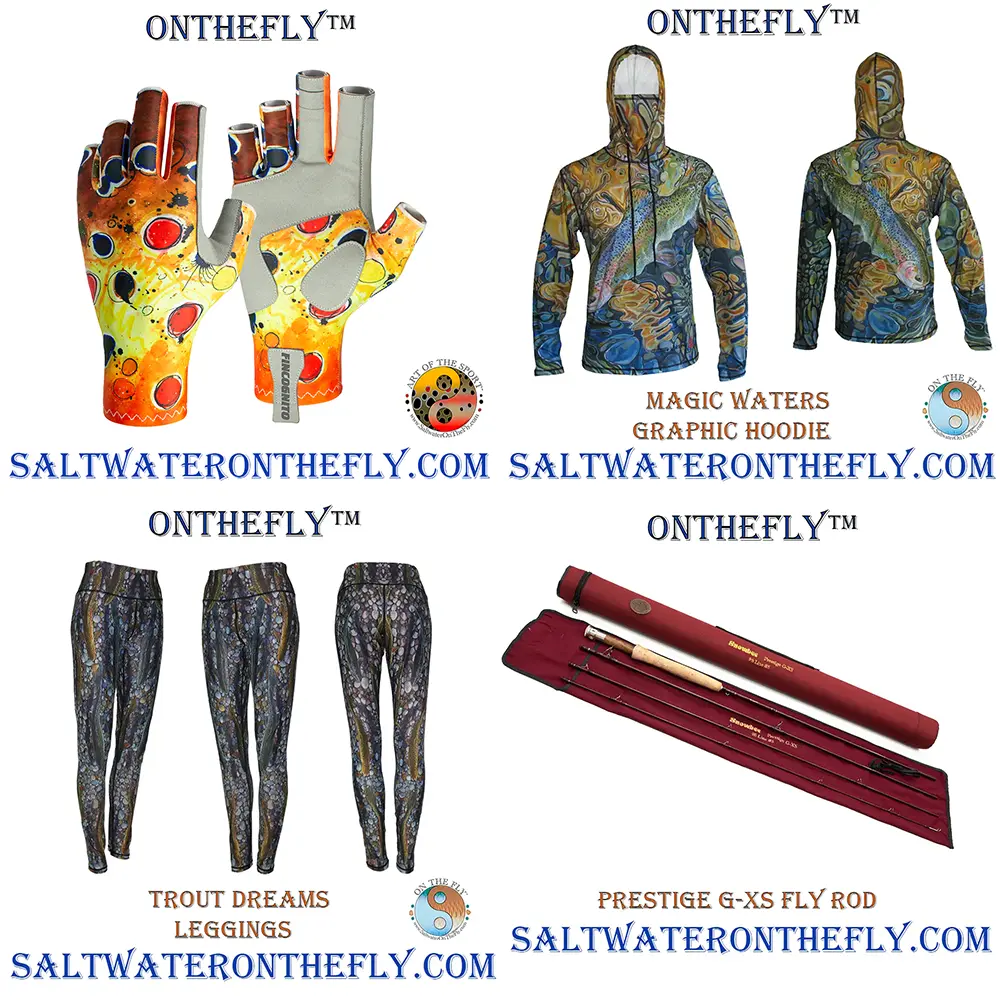
Let’s dive into fly fishing gear and outdoor apparel for comfort on the river. For a fly rod I prefer a Prestige 9′ 6 weight for these type of trips. I always carry a back up. Fishing and rowing gloves 2 pair. Sufficient base and outer layers.
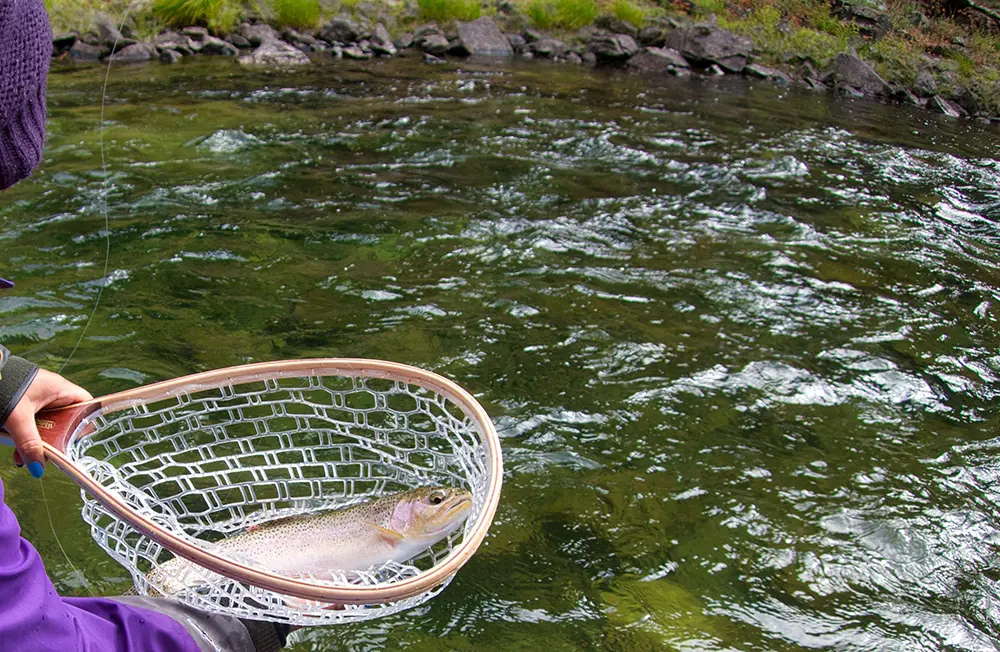
Stanley Idaho is perfectly located on the headwaters of the world famous Salmon River of No Return and the renowned cutthroat fishery of the Middle Fork of the Salmon River. The Fly Fishing opportunities along these two Iconic, designated National Wild & Scenic Rivers and their tributaries is endless.
Ensuring a Sustainable Adventure in Idaho’s Wilderness Areas
Practicing Leave No Trace Principles on the Water
The Middle Fork of the Salmon River flows through the heart of the Frank Church River of No Return Wilderness, one of the largest wilderness areas in the lower 48 states. To help preserve this pristine ecosystem for generations to come, it’s essential to practice Leave No Trace principles on the water.
This means packing out all of your trash, using established campsites, and minimizing your impact on the riverbanks and surrounding vegetation. It also means handling fish with care and releasing them quickly to minimize stress and mortality.
On October 2, 1968, the Wild and Scenic Rivers Act designated the Middle Fork of the Salmon one of the eight wild rivers initially to be included in the new National Wild and Scenic Rivers System. As a result, the river’s remarkable beauty and wild character are much the same as they’ve been for thousands of years. Motor use, expanding tourism, mining activities, logging, intensive (and growing) exploitation of marine fisheries, and anticipated climate change due to the greenhouse effect all pose threats to Idaho’s ecosystems. We will discuss past and present human impacts on the Middle Fork and its wild salmon runs, as well as efforts to restore healthy populations of wolves and bison in Idaho.
Before you cast a line in the Middle Fork, gear up with essentials like a quality fly rod and tackle. Remember to leave your watch behind and embrace river time for an adventure filled with fishing, exploring, and soaking in hot springs. Dive into selecting the perfect flies for cutthroat trout and follow Idaho’s catch-and-release rules to ensure a sustainable trip.
FAQs in Relation to DIY Fly Fishing Middle Fork Salmon River Idaho
What flies work on the Middle Fork Salmon River?
Parachute hoppers, muddler minnows, and stonefly nymphs are top picks. They mimic local bugs perfectly.
Do you need a permit to float the middle fork of the salmon river?
Yes, permits are required for floating. Secure yours early; they’re in high demand during peak seasons.
How tough is navigating the Middle Fork Salmon River?
The river challenges vary with water levels. Spring’s high flows increase difficulty, while late summer offers easier navigation.
Is the Salmon River good for fly fishing?
Absolutely. It boasts abundant westslope cutthroat and bull trout, making it a prime spot for anglers.
Conclusion of Fly Fishing Middle Fork Salmon River
All tales must end but remember this – embarking on a DIY fly fishing middle fork salmon river Idaho expedition is less about the catch and more about catching moments. It’s been said that these waters are among Earth’s hidden gems where each bend reveals new wonders – whether it be spotting wildlife along lush banks or marveling at how effortlessly nature thrives here.
This journey has taught us much – from selecting perfect lures like muddler minnows or parachute hoppers that tease out shy bites in tributary streams, reading river flows like ancient texts revealing secrets only known by native cutthroats’ patterns…it was all part of something bigger.
In truth, we were never really after fish alone but rather seeking connections within ourselves forged through challenges faced head-on under open skies alongside flowing companions echoing our laughter back at us over rippling conversations…
Middle Fork Salmon River to Alaska, Canada, Or Fly Fish Iceland
With a plethora of fly fishing destinations around the world it can sometimes be hard to decide on a destination.



